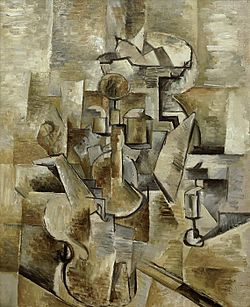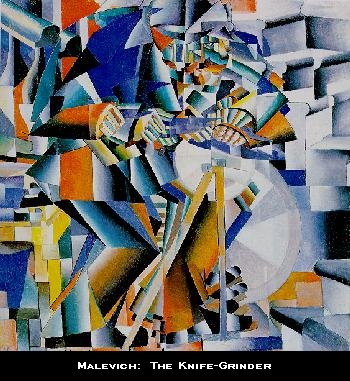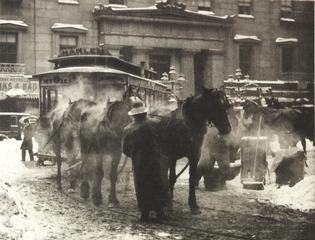Seminar 4: Modern Times – The 20th Century and Early Modernism (1900 – 1920’s)
The co-dependent
relationship between man and machine was growing ever wider. A need for human
intervention in the mechanical age was on the decline with advancements in technologies.Modernism
brought about a general rebellion of historicism. Instrumental to its school of
thought was Albert Einstein’s Special Theory of Relativity (1905), addressing physics
in terms of space, time (dilation – ‘the elapsed time between two events’) and
light. It questioned science as we had known it.
Similarly Cubism
(Analytical 1907 – 1912 and Synthentic Cubism
1912 - 1919) questioned perspective as we had known it, showing it was not
definitive but variable dependent upon the angle of the observer which lead to
its three dimensional characteristics. Most closely associated with the works
of Pablo Picasso (1881 - 1973), Henri
Matisse (1869 – 1954), Marcel Duchamp (1887 – 1968), Paul Cezanne (1839 – 1906)
and Georges Braque (1882 – 1963), it also expressed movement and considered mass, time and space. Images were expressed as if a life drawing or painting were overlaid with a further image from a different angle as you moved around the subject.
 |
| Georges Braque, Violin and Candlestick, Paris, 1910 |
 |
| Pablo Picasso, Les Demoiselles d'Avignon, 1907 |
Futurism
(1909 – 1916), born out of Italy and influenced by Cubism, was an expression
and an embracing of all things new. Abstract in its interpretation, it sought
to celebrate speed, the technological age, violence and all things industrial.
They wanted no part in nature. Nature was weak, while man was all powerful.
 |
Kazimir Malevich, The Knife Grinder, 1912 |
Voticism
was a British modernist movement, circa 1913 that took its lead from Cubism, favouring
geometric shapes and abstract works. World War 1 is thought to have seen the
movement run out of vigour.
Photography
had begun to gain some artistic recognition for its purpose other than just a
means to record but practitioners continued to feel the frustrations of a
medium lacking credibility as an art form.
The painterly
qualities of Pictorial Photography, championed by the Photo-Secessionists from
1902, had somewhat successfully elevated photography’s status but it still had
a long way to go to be seen equal to art. In 1905 in New York, the Little
Galleries of the Photo Secession
opened its doors to the public. The tiny gallery on 291, 5th Avenue,
the brainchild of Alfred Stieglitz (1864 – 1946) and Edward Steichen (a former
painter), saw hundreds pass through its doors in its first weeks. This gave the
Photo-Secessionists a platform to enter the media and soon their works became a
talking point and the topic for debate and discussion. Stieglitz went on to use
this notoriety to invite all manner of artists to exhibit at what later became
known simply as ‘291’. It was a collective of creative minds – not only
photographers and painters but also musicians, critics and poets who would meet
and exchange ideas. Most importantly to Stieglitz he saw this affiliation as a
way to raise the profile and status of photography.
 |
| Picasso and Braque exhibition at 291 (Little Galleries of the Photo-Secession) |
In doing so he is thought
to have been instrumental in the introduction of Modern Art in the USA.
Providing a gateway into the
art world of America, artists such as Cezanne, Matisse, Picasso, Paul and Duchamp
held their first exhibitions at 291.
Having first exhibited in Paris in 1901, Picasso didn’t think America would be
accepting of his cubist works and confirming his thoughts, The Metropolitan Museum
are said to have initially rejected Picasso’s pictures. Following an exhibition
at 291 in 1911, only two pieces were thought to have sold - Stieglitz being one
of the buyers, picking up the piece for between $20 - $40 dollars.
Stieglitz eventually negotiated
with the All Bright museum and secured the inclusion of photography in to their
gallery on the condition it was hung at regular intervals to other pieces of
artwork. While Pictorial photography had opened doors, by this point Stieglitz
and many others, influenced by the likes of Picasso, Cezanne and the realist philosophies
of Modernism had begun to move away from the soft lines of pictorial imagery,
in favor of much sharper images portraying life of the time.
 |
| Alfred Sieglitz, The Terminal, 1892 |
Dada (1915 – 1922), were
an anti establishment group who rejected all rational thought and ideas,
thinking it was this logic that had led to WW1. Its beginnings were in
Switzerland then moving on to Berlin, Cologne, Paris and New York. Dadaism
encapsulated many forms of art including literature, photography, film,
sculpture and assemblage. In 1916, Dada established regular meetings at an
underground club in Paris’s red light district. They eventually came to an end
later the same year due to their reported excesses and wild behavior and to set up at a similar venue - Galerie Dada.
 |
| Marcel Duchamp's, Fountain, 1917, replica 1964 |
Positioning
itself as almost anti art, it claimed to be against art in the traditional
sense and that which could be found in galleries, instead favoring the kind of
art they expressed at The Cabaret Voltaire and examples such as Fountain, Marcel Duchamp, 1917 (photographed by Alfred Stieglitz). Dada works were described as
being based on chance and random events and sometimes just to mock. It was highly influential on the Surrealist
movement that followed.
No comments:
Post a Comment